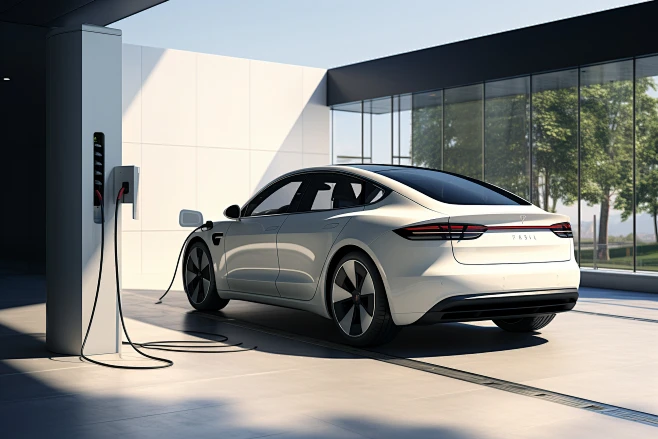Sinoright Blog
Lithium Carbonate: The Key Element Driving Modern Technology

ithium carbonate (Li₂CO₃) usually appears as a white powder, with the characteristic of being slightly soluble in water and having a higher solubility in cold water than in hot water. Its relative molecular mass is 73.89, and it has a high melting point of 723℃, exhibiting good chemical stability at high temperatures.
There are mainly two preparation processes for lithium carbonate: lithium extraction from ores and lithium extraction from salt lakes. Lithium extraction from ores uses lithium-containing ores such as spodumene and lepidolite as raw materials, and through a series of complex processes such as ore dressing, roasting, leaching, and impurity removal, lithium carbonate is finally produced. The lithium carbonate produced by this method has a relatively high purity and can meet the application fields with strict quality requirements such as high-end battery materials. Lithium extraction from salt lakes, on the other hand, utilizes the characteristic that salt lake brine is rich in lithium resources and adopts technologies such as precipitation, adsorption, and solvent extraction to extract and convert lithium in the brine into lithium carbonate. Regions such as Qinghai and Tibet in China possess abundant salt lake resources. Lithium extraction from salt lakes occupies an important position in China's lithium carbonate production. Moreover, with continuous innovation and breakthroughs in technology, its cost is gradually decreasing, and the production capacity is continuously increasing.

Among numerous application fields, the role of lithium carbonate in the new energy field is particularly prominent. With the increasing global demand for clean energy and the rapid development of the electric vehicle market, lithium carbonate, as a key raw material for lithium-ion batteries, has encountered unprecedented development opportunities. Lithium-ion batteries, their high energy density, long cycle life, low self-discharge rate, and other advantages, are widely used in fields such as electric vehicles, energy storage systems, and consumer electronic products. Lithium carbonate is mainly used in lithium-ion batteries to prepare cathode materials, such as lithium iron phosphate (LiFePO₄) and ternary materials (such as nickel-cobalt-manganese acid lithium NCM, nickel-cobalt-aluminum acid lithium NCA, etc.). The performance of these cathode materials directly affects the energy density, charge-discharge performance, safety, and service life of lithium-ion batteries. High-purity and high-quality lithium carbonate can ensure that the cathode materials have good electrochemical performance, thereby enhancing the overall performance of lithium-ion batteries, providing a solid guarantee for the improvement of the endurance mileage of electric vehicles, the reduction of charging time, and the efficient operation of energy storage systems.
Besides the new energy field, lithium carbonate also has a wide range of applications in other industrial fields. In the ceramic and glass industries, lithium carbonate can be used as a flux to reduce the melting point and viscosity of materials, improve the heat resistance, chemical stability, and mechanical strength of ceramics and glass, making the product surface smoother and the transparency higher. It is often used in the manufacturing of high-end products such as special ceramics, optical glass, and glass-ceramics. In the electrolytic aluminum industry, the addition of lithium carbonate can effectively reduce the melting point and viscosity of the electrolyte, increase the conductivity, and reduce the energy consumption and fluoride emissions during the electrolysis process, which is of great significance for promoting the green and sustainable development of the electrolytic aluminum industry. In addition, lithium carbonate is also used as a raw material for drugs to treat mental illnesses such as mania in the medical field and as an additive for high-temperature lubricants in the grease industry, further demonstrating its diverse values in different industrial fields.
With the continuous increase in the global demand for lithium carbonate, its market supply and demand pattern is also constantly evolving. In recent years, China has achieved remarkable achievements in lithium carbonate production and has become the world's largest producer and consumer of lithium carbonate. However, due to the rapid development of industries such as new energy vehicles and energy storage, the market demand for lithium carbonate still shows a situation of short supply, and the price also fluctuates greatly. To ensure the stable supply of lithium carbonate, on the one hand, enterprises are continuously increasing their investment in resource exploration, mining, and production technology research and development to improve production capacity and product quality; on the other hand, they are actively expanding overseas resource cooperation and strengthening the control and utilization of global lithium resources. At the same time, the government has also introduced a series of relevant policies to encourage and guide the healthy and orderly development of the lithium carbonate industry, including aspects such as resource development management, industrial structure optimization, and technological innovation support, aiming to enhance the global competitiveness and influence of China's lithium carbonate industry.
